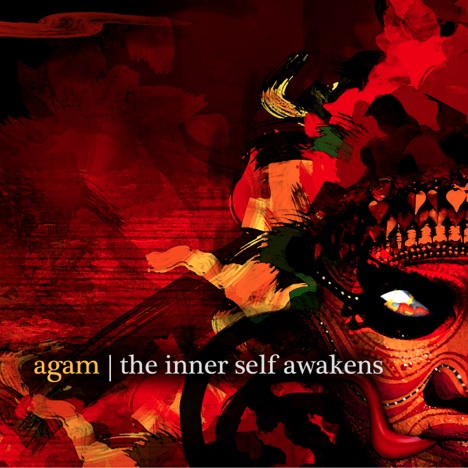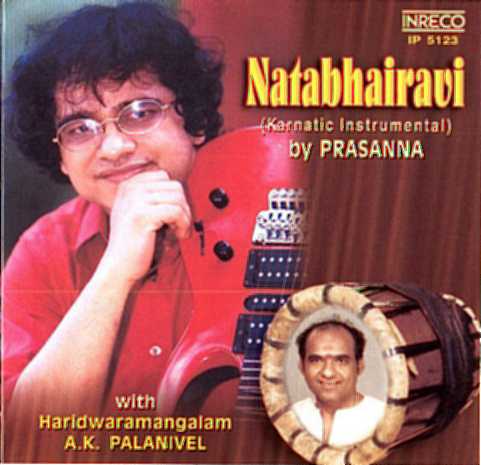
Software engineers by day and musicians by evening or at least over the weekend – such is the story of Agam. Formed in 2006, following a few compositions (which were mere experiments then) by a bunch of friends in an apartment studio, Agam has become a powerful force with their brand of music since then. This Bangalore-based ensemble features Harish on vocals, Praveen on lead guitars, Swamy on keyboards, Vignesh on bass guitar, Jagadish on rhythm guitars, Ganesh on drums and Sivakumar on ethnic percussions.
From winning a musical reality show helmed by maestro A. R. Rahman himself to collaborating with Shreya Ghoshal, the band has had a glorious journey thus far. Though, a performance on the fabled Coke Studio stage has been the talking point for a while now and makes a perfect setting for the release of their debut album. Agam literally translates to the inner self and hence the album gets the name The Inner Self Awakens. Each song in the album pivots around a central Raga and is embellished by the elements of progressive rock, which brings into perspective a completely unheard of and unexplored genre – Carnatic Progressive rock. With the songs quite often delving into religious themes, the cover art of the album has been aptly chosen to depict the Keralite festival of Theyyam.
Bramhas Dance starts off with a vedic chant accompanied by war-field percussions and roaring bass-lines that provide a worthy build up to this terrific album – almost as if calling out to awaken the enormous beast from its Carnatic foregrounds. Harishs violin is subtle but adds the most mellifluous of touches to the song. The appropriate use of cymbals, the ghatam and Praveens electric guitar are in complete sync with the vocals as the song goes through a plethora of moods and tempos.
Dhanashree Thillana is the progressive rock rendition of a Swathi Thirunal composition based on the Dhanashree Raga and is perhaps one of the finest tracks in the entire album. This one kicks off as a typical rock ballad but gradually transcends into melodic taranaas moving over an entertaining rhythm structure. The guitar sounds magnificent and the jugalbandi with Harishs vocals leads to a perfect finish.
Inherently violent in nature and composition, Rudra fits the bill for Tandava or what the more mainstream metal-heads call it – head-banging. Like any regular metal song, it is loud, noisy and all about the heavy guitar lines and percussions. But a funky and rather jazzy bass solo, high-pitched melodies and the wonderful usage of the conch towards the end, for me, stole the show.
Justifying the moniker, Boat Song is for vallamkalli or the Boat Race during Onam. The song has got an extremely happy ring to it and you wont be alone in thinking that the song sounds like something out of a Malayalam movie. But thats only till Praveen churns out a breath-taking guitar solo that dispels all clichés.
The start to the song Swans of Saraswati is an incoherent feature here and perhaps a tad overdone for the sake of rock. Though, it soon takes shape in a beautiful guitar solo, like any other song in the album, this song relies predominantly on Harishs vocals and his numerous alaaps. This enormously brave endeavour to give Thyagarajas Bantureethi a rock makeover is an absolute stunner. Its unbelievable how Rock gets weaved into Carnatic Classical music with such ease – as if they werent ever different entities, just like a perfect marriage.
Malhar Jam is the most refreshing, energetic and undoubtedly the best composition on this album. This song also featured in a multi-producer episode of Coke studio, though a very different rendition of it. This one has got no israj in it and the flute segment by Annada Prasanna Patnaik (who does a cameo here too) is subtle and barely forms the highlight. This ones got more room for Swamys wonderful work on the keyboard, taranaas and Vigneshs heavy bass lines. The song forms a grandstand finish to this magnificent thirty-eight minute album.
The sonorous vocals of Harish stand apart throughout the album and the percussions, bass and guitar lines complement each other well. Their experiments with a few classics may make a staunch Carnatic listener think twice, but for a generation thriving on a healthy blend of sensibilities, its a guaranteed treat. The rock may have got a little too heavy for fusion here and there in the album but the underlying beauty of a raga has barely been compromised. Six years has been a rather tantalizing wait but when sated by such an eclectic experience, it has been worth it. For a debut, this is a scintillating start by Agam and may go down as one of the top albums to be released this year. The album goes through the various textures of a human brain and listening to it is a spiritually uplifting experience – all this for a meager amount of Rs. 90 – who wouldnt want to buy it?








